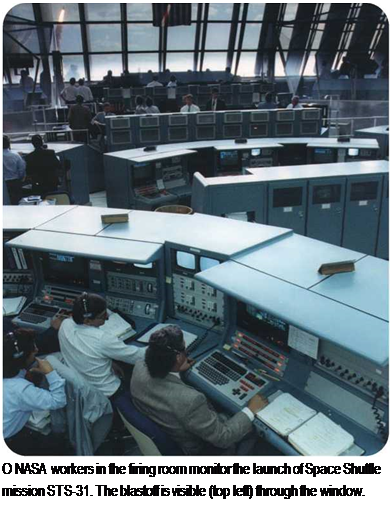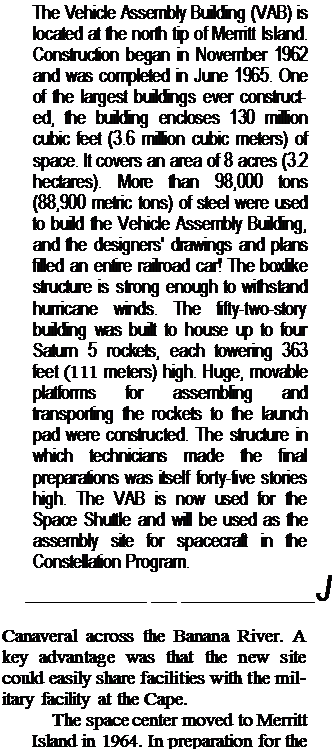Background of the Space Center
After World War II, U. S. scientists began rocket experiments at the White Sands military facility in New Mexico. As the United States developed its missile program, a new launch site was needed. In 1949, President Harry S. Truman
 authorized a firing range at Cape Canaveral in Florida.
authorized a firing range at Cape Canaveral in Florida.
The area was thinly populated and therefore an ideal site for testing secret and sometimes unpredictable rockets.
Cape Canaveral also offered a fine, clear climate and access to thousands of square miles of the Atlantic Ocean.
Cape Canaveral attracted more media and popular interest after the United States launched its first satellites, Vanguard and Explorer, in 1957 and 1958. Despite these successes, U. S. public opinion was critical because the Soviet Union had taken the lead in the “space race.”
The demand for more action led to the formation of NASA in October 1958, and Cape Canaveral became a major launch base for NASA as well as for the U. S. military.
The United States in Space U. S. space exploration opened a new chapter in May 1961, when President John F. Kennedy announced the United States would send astronauts to the Moon before the end of the 1960s. On July 1, 1962, Cape Canaveral became NASA’s new Launch Operations Center. The first director of the center was Dr. Kurt H. Debus, a rocket scientist. The Launch Operations Center was renamed the John F. Kennedy Space Center in December 1963, a month after the pres
ident’s assassination. (Cape Canaveral was renamed Cape Kennedy that year, but it reverted to its old name in 1973.)
The Apollo Program was now underway. So vast was this project, and so big was the three-stage rocket planned to launch Apollo spacecraft to the Moon, that NASA decided to build a larger launch facility. Several sites-including ones in Hawaii, Texas, California, and the Caribbean-were considered before NASA and the Department of Defense chose Merritt Island, west of Cape
![]()
 Apollo Moon missions, a huge construction program was undertaken with the help of the U. S. Army Corps of Engineers. A new launch center, named Launch Complex 39 (LC-39), included the vast Vehicle Assembly Building (VAB).
Apollo Moon missions, a huge construction program was undertaken with the help of the U. S. Army Corps of Engineers. A new launch center, named Launch Complex 39 (LC-39), included the vast Vehicle Assembly Building (VAB).
With the Mercury and Gemini spaceflights of the 1960s, interest in spaceflight grew. Each blastoff attracted excited media coverage. Kennedy Space Center became the center of world attention in 1969, when the Apollo 11 mission blasted off from LC-39 for its historic trip to the Moon, honoring President Kennedy’s pledge.










